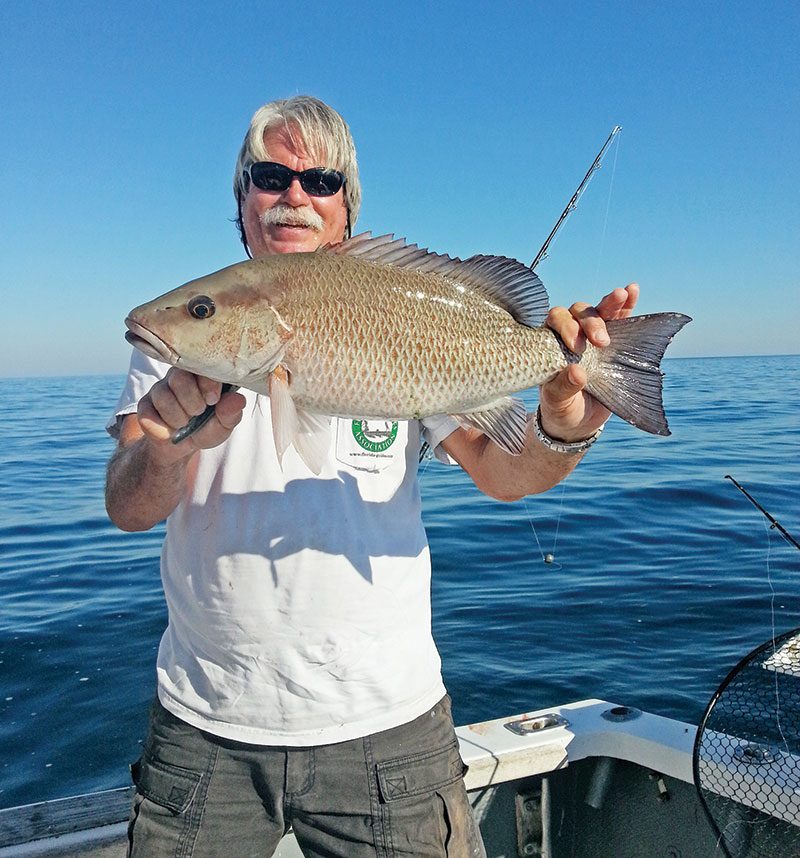
The red snapper bite has been hot! Fish are stacked on the natural bottom and artificial reefs throughout our area. Deep jigs have been the easiest tackle to use but anything that gets in front of them gets taken. With the limit of 2 fish per angler, red snapper fishing can be wrapped up fairly quick when you are in the right place. So, when the limit is reached try going for the other species of snapper that hang around the same bottom. Mangrove, or grey snapper, are large and can be caught easily if you can get past the red ones. Lane snappers are usually over looked but offer get eating and can be taken on the edges of larger structure where the bigger fish hang out. Always remember to use circle hooks when bait fishing in the Gulf; it’s the law.
Sea trout have been caught every where this season. I was at the 4th Street ramp in Carrabelle and watched a young man reel in a 6 pound 4 ounce trout from the finger dock. He caught that nice fish on a DOA jig head tipped with a shrimp tail. That ramp is up the river and it’s not what you would expect at that location in the summer. The flats from Rattle Snake Cove, St. George Island all the way to Alligator Point have been good as well. It gets pretty hot at mid-day so try fishing the drop off were the grass gives way to the sand edge in 6- to 8-feet of water. You just might find a cobia moving along the deeper water. Some big catches of silver trout can be had at the rock piles along Dog Island and Dog Island Reef. They run smaller than sea trout, but are great to eat and fun to catch.
There have been some big catches of sharks lately, and even though they are considered pests, hanging one can be quite a battle. Bull, sand bar, nurse and tiger sharks are the main species we have here. Some of these can grow pretty big and a 200 pound bull shark is very impressive when brought along side the boat. Young Atlantic sharp nose sharks are all over Dog Island Reef and sure are fun for the junior angler on light tackle. Bonnet head sharks look similar to hammerheads, but don’t get any larger than 3 feet. Some sharks, like the black tip, may be taken but are best released. It’s a good idea to read up on the FWC regulations on harvesting all the different types. The overall health of the Gulf of Mexico can be measured by the number of sharks since they feed primarily on fish; more sharks means fish stocks are plentiful.
Summer is upon us so take precautions for sun exposure and dehydration. Drink plenty of water and apply sun screen. Clothing with the latest sun block technology can save the day.
Good luck out there and be safe.
CAPT. CHESTER REESE
Natural World Charters
(850) 228-9060
www.naturalworldcharters.com
